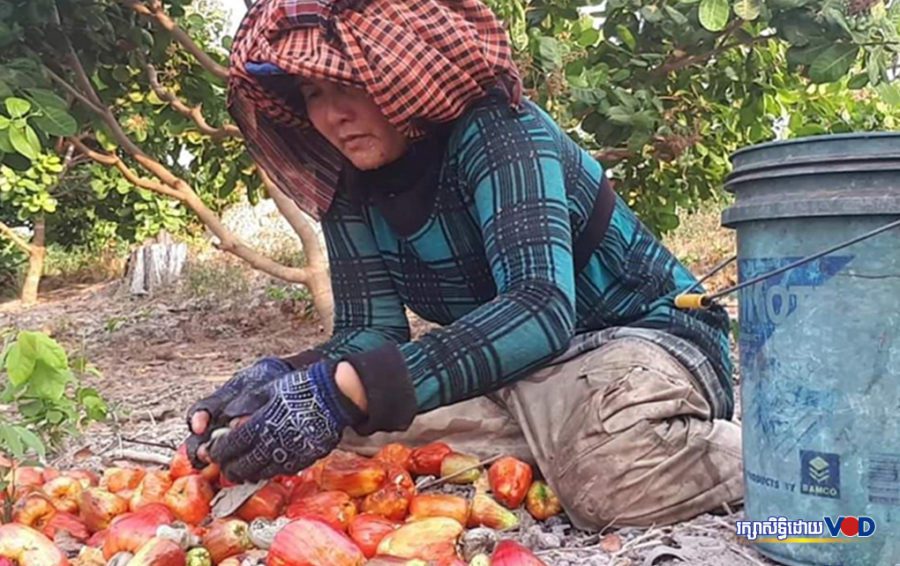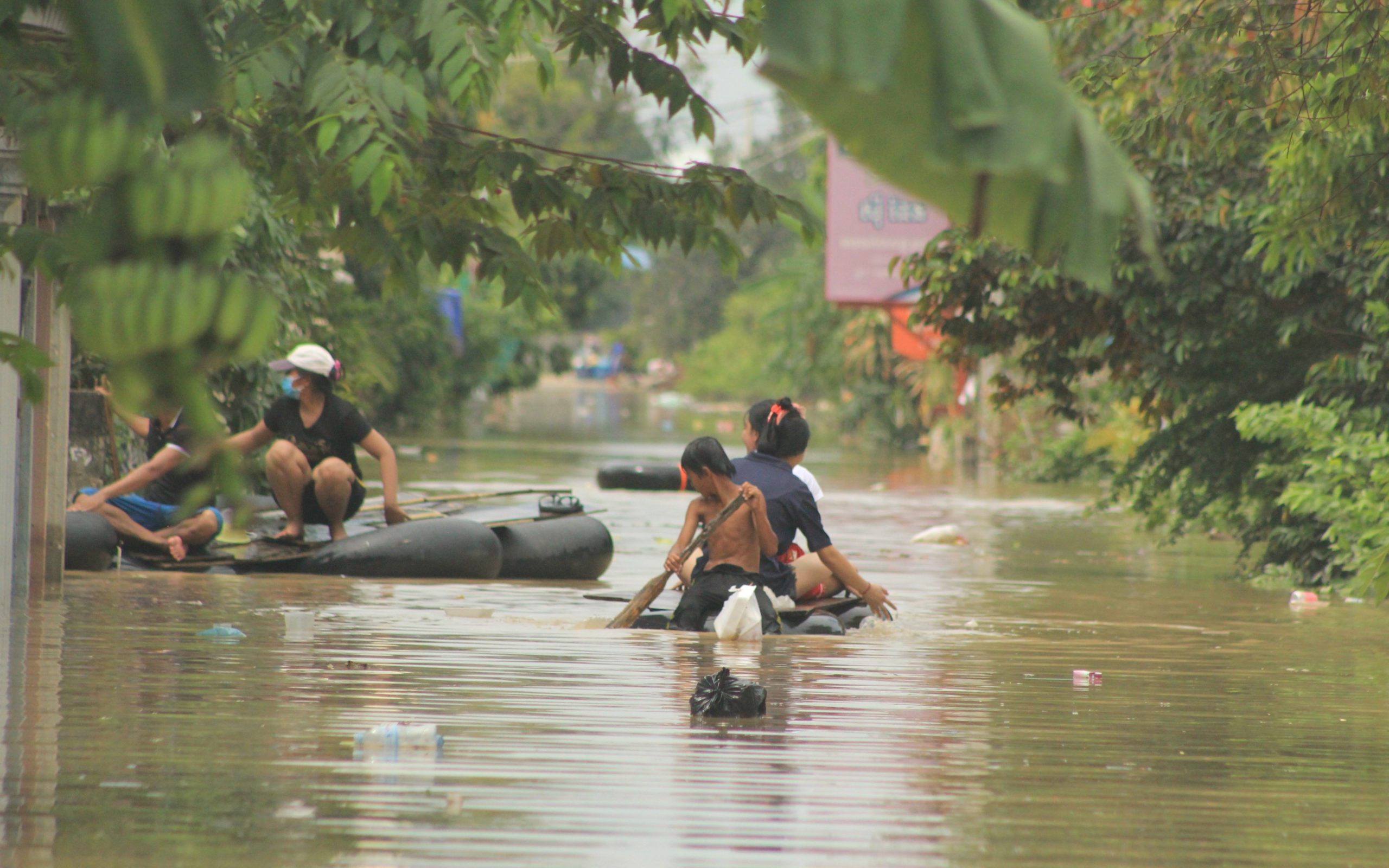A national government survey of 10,000 households, released on Tuesday, shows increased debt burdens as well as fewer households owning land, more cultivation of fruits and nuts, and the disappearance of video tape recorders and radios.
The Planning Ministry’s National Institute of Statistics released its Cambodia Socio-Economic Survey for 2019 and 2020 on Tuesday, an annual report that had not been updated since the 2017 edition.
The survey, of 10,080 households in 1,008 villages, was carried out between July 2019 and June 2020.
According to the report, the number of households that have agricultural land dropped from about 3.3 million in 2017 to 2.3 million in 2019/20, though the figures from 2017 appear unusually high.
The number of households that held at least 1 hectare in 2019/20, at about 560,000, was the lowest since at least 2009, the first year the statistic is available online.
Theng Savoeun, president of the Coalition of Cambodian Farmer Community, said the statistic reflected what he had seen of farmers giving up their land or reducing farm sizes to get some emergency cash.
“Due to the escalation of the debt crisis, we have seen that farmers in rural areas with small plots of land are selling their property or exchanging it to repay their bank loans,” Savoeun said. “So that is one reason they lost their land or have almost no land to plant on, and some of them have no more land at all, even for building a house.”
Savoeun added that those who lose their farms often must migrate to other provinces for work.
The Socio-Economic Survey recorded 6.3 million people as urban, up from 3.8 million in 2017, though it noted this resulted from changes in what areas are classified as urban after the recent census.
The number of unemployed rose from 13,000 to 215,000 in the same time period, but this was due a change in methodology for unemployment, it says. The ministry’s director of the economic statistics, Nor Vanndy, said he could not explain the methodology change in detail, but the apparent increase of unemployment was nothing to worry about.
On debt, the report found 1.25 million households were indebted in 2019/20, up 2.5 percent from 1.22 million in 2017. The report estimates there are 3.6 million total households in the country.
The average amount of the debt, meanwhile, rose 85 percent from 9.6 million to 17.7 million riel, or about $2,400 to $4,400 per household, according to the survey.
Chuor Kunthea, a worker at the SLJ garment factory in Phnom Penh, said she was borrowing money every month — about $10 to $20 — to keep up with her expenses and debt repayments. She was always in debt between $50 and $100, she said.
Her father in Kampong Cham province also perennially had about $400 to $500 in bank loans, Kunthea added.
“We lack a lot of things, and we borrow a lot,” Kunthea said.
Naly Pilorge, director of rights group Licadho, which has published research reports linking microfinance debt to land loss and alleged human rights abuses, said borrowers were under pressure to sell their land.
“The sharp rise in household debt, most of it from MFIs, continues to threaten many families’ land tenure security,” Pilorge said. “Cambodian microloan borrowers continue to sell their land as a result of microloans collateralised with land titles. Sometimes this is due to direct pressure from credit officers, other times because debt levels are just unsustainably high.”
Pilorge also pointed to a Socio-Economic Survey finding that the reason given for 46 percent of children who did not attend school was that they “must contribute to the household income,” up from 29 percent in 2014.
“In interviews we’ve conducted with MFI borrowers, many felt forced to take their children out of school and put them to work in a desperate attempt to repay predatory loans,” she said, calling for immediate, independent investigations into the sector and an end to pressuring borrowers to sell land.
A recent study by Kimty Seng at the Center for Strategy and Innovation Policy in Cambodia also used previous editions of the Socio-Economic Survey to link microfinance debt to school dropouts.
Based on a regression analysis, microcredit is “liable to increase the likelihood of a child dropping out of school and the probability of child labour,” the report finds.
Kaing Tongngy, spokesperson for the Cambodia Microfinance Association, said the association had not studied the survey in detail, but had seen an increase in average loan size while the number of clients remained about the same. He suggested this was a way for the microlenders to remain profitable.
“With the interest rate cap of 18% introduced in 2017, MFIs can only profit for loans above 2,000 USD. Thus, in order to be able to serve low-income people (small loans) MFIs have to also serve high income people (bigger loans). Profit from bigger loans will help MFIs to serve smaller loans for low-income people,” Tongngy said.
According to filings to the Cambodia Securities Exchange, microlender LOLC’s profits increased 24 percent year-on-year in 2020 to $45 million, while HKL’s interest income also rose even as its profits fell 20 percent to about $26 million largely due to losses on “financial instruments.”
Tongngy said the association had studied NGO reports about alleged abuses, “but our own data and research found no systematic connection between MFI debt and land loss.”
“Studies from various authors have found quite an opposite such as relation of MFI loan, access to electricity and low poverty rate,” he said.
He acknowledged there was urban migration and “land consolidation trend in rural areas,” possibly due to rising labor costs, which meant small landholder farmers could make more money by working full-time in factories or construction.
According to the Socio-Economic Survey, 24 percent of agricultural households grew fruits and nuts in 2019/20, up from 10 percent in 2017. Meanwhile, the prevalence of video tape recorders fell from 23 to 3 percent between 2014 and 2019/20, and radio from 33 to 16 percent. Some 93 percent of households had a mobile phone, up from 83 percent in 2014, the report says.
Additional reporting by Va Sopheanut













